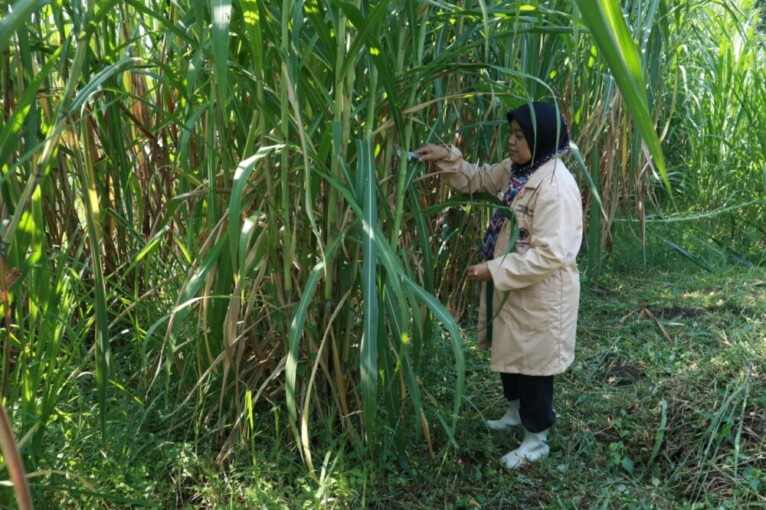
The Faculty of Animal Science UGM has produced Gama Umami grass, a kind of mutation of elephant grass that has been irradiated with gamma rays to produce grass superior to its parents.
Elephant grass is chosen because it is a special type, favored by ruminants, and is very suitable for Indonesia, a tropical country. Ir. Nafiatul Umami, Spt., MP., Ph.D., IPM., ASEAN Eng as UGM Faculty of Animal Science lecturer and the head of grass researcher Gama Umami, demonstrated that the result of Gama Umami grass production is bigger than local elephant grass. Besides, it can be harvested up to 6 times a year.
“Mutations with gamma radiation can induce plant morphology, anatomy, and physiology, resulting in superior plants. The application of gamma-ray gamma-rays worked on vegetative organs, flowers, and seeds of elephant grass plants,” she explained.
She also further explained that elephant grass exposed to Gamma radiation was then selected, and Gama Umami grass was obtained from 100 Gray irradiation. Gamma-ray radiation itself is known to leave no radioactive residue in the irradiated material.
A study conducted between the Faculty of Animal Science UGM in collaboration with the National Nuclear Energy Agency (BATAN) through the Center for Isotope and Radiation Application (PAIR) showed that radiation results impacted the feathers on the less Gama Umami elephant grass plant. However, it greatly affected palatability or the ability to taste food in ruminants.
The result of vegetative growth and morphology of Gama Umami elephant grass is more reliable than its parents because gamma rays are based on interactions with atoms or molecules in cells, especially water, to produce free radicals.
“These free radicals can harm or modify important components of plant cells. For example, they can affect plant morphology, anatomy, biochemistry, and physiology, which can produce better and superior plants,” added Nafiatul.
There was a report in the gamma-ray radiation breeding results testing results, Gama Umami elephant grass plants that showed vegetative growth results with plant height between 3.4-3.7 m, plant length 3.7-3.8 m, and leaf length 1.1. -1.3 m, internode 12-15.3 cm, stem diameter 2.2 cm, and the number of shoots 41-50.
These tests were also carried out by observing Gama Umami grass’s biomass production and chemical composition, which shows that Gama Umami grass is very good if given to ruminants seen from its high production and good chemical content.
Some breeders, especially in Yogyakarta and surrounding areas, have introduced and developed this grass. Cahyo Kurmai, a farmer from Banyumas, said that Gama Umami grass on his land had produced satisfying results.
“Gama Umami has greener leaves compared to other grasses. Besides, there is no fine hair. Even if we sleep on the leaves, it will not feel tender compared to if we sleep on elephant grass leaves,” she said.
Prof. Dr. Ir. Ali Agus, DAA, DEA, IPU, ASEAN Eng., as the Dean of the Faculty of Animal Science UGM, who researched Gama Umami grass as well, revealed that besides being used as animal feed, this grass is also examined and processed into biofuel.
“The fiber content in the Gama Umami grass stalks is one of the ethanol-producing materials that are capable of being utilized as an alternative energy source and has the potential to provide liquid, solid, and gas fuels for fossil fuel replacement. However, further testing is still required so that later Indonesia can develop on its own,” said Ali.
Author: Gloria
Translator: Natasa A

